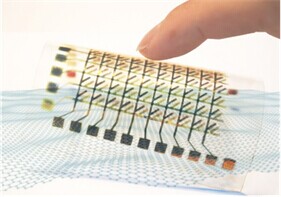文章专利

- 地址: 江苏省苏州市苏州工业园区若水路398号
- 邮箱: tzhang2009@sinano.ac.cn
- 电话: 86-512-62872706
- 传真: 0512-62603079
- 网址: http://nanosensor.sinano.ac.cn

Xuewen Wang, Zuoping Xiong, Liu Zheng, Ting Zhang*. Exfoliation at the Liquid/Air Interface to Assemble Reduced Graphene Oxide Ultrathin Films for a Flexible Non-contact Sensing Device, Adv. Mater. 2015, 27, 1370–1375.
Flexible electronics forms a new class of electronics, which is distinctively different from silicon electronics, for the next generation of functional circuits and sensing devices, such as flexible field-effect transistors, flexible flash memory, stretchable sensors, bendable batteries, and elastic bionic devices.[ 1–5 ] The stretchability and flexibility make these devices great candidates for potential applications in portable, wearable, and attachable electronic systems. A novel flexible electronic material, as an active component, is essential due to their important role in flexible electronics. Recently, carbon-based nanomaterials, e.g., carbon nanotubes (CNTs), have been considered to be promising materials for flexible electronics as they show high performance with good mechanical flexibility, tunable metallic/ semiconducting electrical properties, and Young’s modulus.[ 6–8 ] However, integration of CNTs into flexible devices is still challenging owing to the poor control of chirality in CNTs and the location of an individual CNT. Atomic-layered films like graphene shed light on flexible electronics from fundamental research to practical applications due to their excellent performance comparable with CNTs. However, the scale-up productiofrom n of high-purity graphene seems a hurdle for commercialization of flexible electronics, in spite of continual effort in recent years.
Full Article:http://onlinelibrary.wiley.com/doi/10.1002/adma.201404069/pdf

